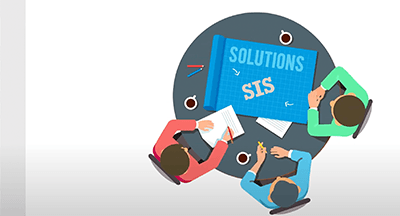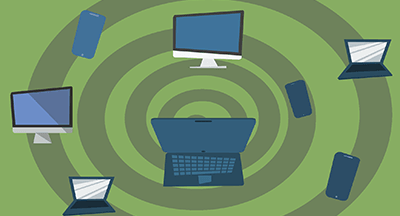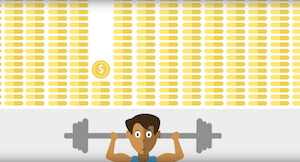
“Big,” when talking about an industry, raises red flags in people’s minds for a reason. Look at the industries that usually get the descriptor: big tobacco, big oil, big pharma. Nobody earns “big” by being an overwhelming force for good, but isn’t technology for education supposed to be a force for good? Like most industries, it can be, but it can also veer into shady territory.
With edtech initiatives attracting investment dollars, it’s getting more and more difficult to see the line between using technology to facilitate education and using education as a profit generator for technology companies.
Bigger can mean better
Even though there are negative connotations to contend with, bigger can mean better in edtech when it means that underfunded districts could gain access to technology that they wouldn’t be able to provide on their own. In 2021 Verizon alone pledged at least three billion dollars to ensure that vulnerable communities didn’t fall behind in education in the first year after the pandemic began.Another perk to the explosion of edtech, as seen in the Verizon initiative, is that introducing a wide variety of edtech programs into a district allows for a more future-ready education. If students can explore a rich spectrum of immersive STEM technologies, they will be more prepared to enter a market sector in five or ten years that might not even exist right now.
When big edtech is too big
When an edtech company has the money and influence to ensure that its programs and products get rolled out into schools, the trouble begins brewing.No regulation or oversight
The first pitfall of rampant edtech rollout is that there is little to no regulation or oversight to track whether or not the technology is effective for increasing student achievement. Vincent Quan, coauthor of “Education Technology: An Evidence-Based Review”, discovered that “… a lot of education technology companies don't feel like they have incentives to actually have their programs evaluated and the school administrators often feel like they have no choice. A lot of these programs are not backed by evidence, and they feel like they have to implement an education technology program.”At best this implementation attitude could just lead to having a what’s-new-and-now approach to edtech. At worst, this could lead to the implementation of counterproductive technologies that were never properly reviewed, if at all.
The playing field is still not level
Access to edtech in the classroom is supposed to be great equalizer. In the classroom. An entirely new, prohibitively uneven playing field is created when that edtech is supposed to bridge into the home. According to the FCC, at least 19 million Americans lack access to reliable internet service at home. The majority of that number is made up of families in rural or tribal areas–areas that already suffer from being underserviced and underfunded. When too much of education hinges on technology, these students still can wind up trailing behind peers in tech-ready homes.So much money, too much influence
What makes the concept of “Big Edtech” so thorny is that it doesn’t necessarily refer to billion-dollar companies granting out a portion of their profits to benefit education. True big edtech means companies that look at education as just a means to fill the coffers. Market data research has revealed that in 2010, approximately $500 million of venture capital was invested in edtech around the world, which rose precipitously to $16.1 billion in 2020. Education technology is a cash cow, and companies are milking it.Imagine a college professor that assigns a textbook they wrote, says you can’t pass the class without it, and then charges you 200 dollars for it. It would be ethically questionable, but the students who would need the class wouldn’t really have any power to complain. This is the same problem that results from all that education profiteering, except companies can push their products onto an entire district, state, or country. If some of that money finds its way to lobbying legislation toward their favor, the problem increases exponentially—there is no chance for recourse when fighting that kind of disruptive influence.
Edtech "little guys" aren't so little
If education is supposed to build the foundations of society, money is a pickaxe chipping away at the base. What makes this entire issue more nefarious is that education on the bottom tier—at the teacher and school level—is often touted as a "calling," "its own reward," and “for the kids,” making it taboo for teachers to demand increases in pay while the rest of the industry is making bank.Like educators themselves, good edtech calls for humanity above and beyond all else. Smaller organizations committed to a personal touch stand in contrast to these edtech giants gobbling up startups and spitting out flawed solutions.
There are still forces for good in education technology. Instead of implementing solutions based on shiny promises, bells, and whistles, edtech investment on the district level calls for thoughtful searches for straightforward, mission-rich solutions.
WHAT'S NEXT FOR YOUR EDTECH? The right combo of tools & support retains staff and serves students better. We'd love to help. Visit skyward.com/get-started to learn more.

|
Lindsey Canny Edtech Thought Leader |
Lindsey Canny is a marketing copywriter for Skyward, Inc., a school administration software provider based in Stevens Point, WI. Prior to working at Skyward, Lindsey spent eight years teaching 9th and 10th grade English within the Stevens Point community. Outside of work she enjoys reading books and spending time with her husband and cat.




